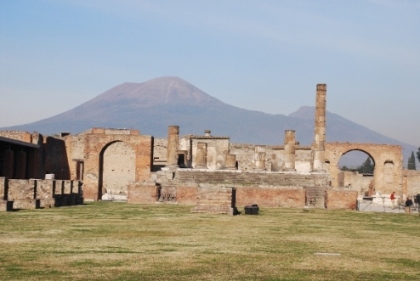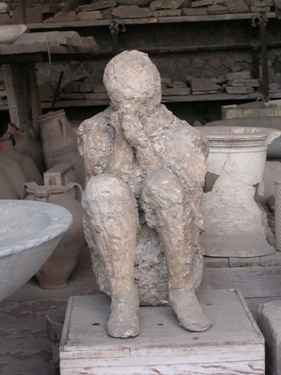
Pompeii (be) a ruined city, near Naples in the south of
Italy. The story of Pompeii has always interested travellers, which is why it
is a popular destination. The city (destroy) by a volcano in AD 79.The
eruption (last) two days and left behind a perfect picture of Roman life in the
first century. For the people in Pompeii, August 24th, AD 79 started like every
normal day. The streets (be) full of activity. People were going to and from
their destinations.
Then suddenly, around one o�clock in the afternoon,
they (see) smoke coming out of Mount Vesuvius. At first, they were shocked to see
this, but knew they did not have time to stand and stare. Some people went home
to collect valuable things they (leave) behind. Others tried to leave town
immediately, but they (not know) where to go. In the middle of all this,
stones and rocks began to pour into the city, and heavy, black smoke filled the
air.
The thick, black cloud from the volcano made it so
dark that people couldn�t see where they (go). They were trying to run
away, but it was very difficult. They were having problems breathing because of
the smoky air; the stones and rocks (fall) down more heavily, and the
buildings (shake) violently, but still they ran. Some victims didn�t run
away and (stay) in the city, trying to hide from the eruption inside their
homes.
�The people who (run) away were trapped inside
their houses because the stones and ash were blocking doors and windows, suffocating
the people inside. Others lost their lives as buildings fell down. Others (trap) in the higher floors of buildings where they had found shelter. At
sunset, when the volcano calmed down, the survivors who (hide) in their homes
came out and were searching for a way to escape.
As the sun was going down, they walked through the
destroyed city. They were carrying lamps to light the way to the edge of
Pompeii. But unfortunately their journey was pointless. At dawn, the volcano
(erupt) again and (kill) those who (try) to get out of the city. That
morning, at about 7.30 am, the final eruption completely (bury) Pompeii. Death
came to any survivors who (walk) in the streets or had hidden on the top floors
of buildings or underground. At 8 am, a volcanic river destroyed the highest
walls of the buildings and carried away the bodies of the victims.
For the next 1,500 years, the city was undisturbed
because people (completely forget) about it. But then the architect Domenico
Fontana decided to build there in the late 16th century. While he
was checking out the area, he (find) a city that had been frozen in time. It was
truly amazing! Today, a visit to Pompeii is a step into the past. When you walk
there, you are walking in the city as it was nearly 2,000 years ago.


